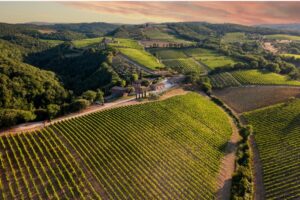
“We need to look at the amphora not so much as a container, but as a very important communication tool. We are faced with consumers who drink more with their brains than with their mouths, and we need to address the dramatic issue of changing tastes toward beverages”. This is the view of Attilio Scienza, among the leading experts in viticulture and enology and scientific director Amphora Revolution, the first exhibition dedicated to amphora wines in Verona (Gallerie Mercatali) signed Merano WineFestival and Vinitaly, staged yesterday and today. “The history of the beverage revolution”, Scienza tells Winenews, “has been repeating itself for hundreds of years. Between the fifteenth and seventeenth centuries it was brought about by a series of phenomena similar to those that are occurring today. Climate change, wars, social changes and so on. In this context the amphora is a metaphor, a Trojan horse to convince young consumers, but not only, to return to wine in a context where alcohol is feared and avoided for health reasons. For wine, which contains less of it than the spirits moreover drunk by young people, we can only exorcise this fear with culture, making it clear that thousands of generations have drunk it without consequences and that wine has been in history a great cultural stimulus. In this framework, the amphora also allows us to overcome the prevention toward a wine-making perceived as interventionist, because it gives a wine as it was made 500 years ago. The amphora creates an opportunity for a cultural discourse related to origins, history up to elements of psychoanalysis that is difficult to do about current wines”.
The great potential of this typology, that of wines produced in amphora, although very varied, is shown by the growth of labels and companies offering them. In Italy there would be more than a thousand producers of wines processed in terracotta jars, with many winemaking methods, but definitely more are those who are evaluating this tool/container that is often present in the winery as a “special observer” to practice “seeing the effect it has” on the characteristics of the wine.
After amphorae of Georgian origin were brought and used in Italy by Oslavia’s forerunner winemaker, Josko Gravner, in the late 1990s, the amphora-wine-orange binomial was consolidated. Almost 30 years later, containers declined in different materials and different forms and the diversification of winemaking techniques have freed the wine from a specific type of sensory profile, but the impression is that there is, as happens at the beginning of a new era, a kind of dichotomy. On the one hand, there are those who use them by virtue of their “kindness” to the grapes, believing that they thus enhance the variety-territory binomial without interference from substances released by wood, but with a calibrated exchange of oxygen, which steel does not allow, good thermal insulation as in concrete, as well as a long life that makes them sustainable. On the other hand, there are those who use them precisely because of the “figure” they give wines, a sort of common denominator that organoleptically declares the production method whatever the starting “ingredients”. It is clear that this is a pushed schematization, because determining the results are the also very different characteristics between the materials of construction-clays and other starting materials are very different from each other-and the conduct of winemaking. Moreover, the latter is declined in an absolutely personal way: wines made entirely in amphora and also in different ways, for example in earth or above ground, and others for which the use is reserved only for one stage of wine making. In this “middle ground”, even the communication aspect of wines collected under the label “in amphora” - which is generic at this point - risks dichotomy, but finds a common denominator in the remote history that links them to contemporaneity. “The communication of amphora wines”, continues Attilio Scienza, “tells us that these are not globalized products that are the result of heavy-handed winemaking and therefore wrongly defined as “natural”. They answer the demand for a wine that is as untainted by the hand of man as possible. The word of reference is amphora, so much so that the grape variety is almost never indicated on the bottles, nor usually the territories of origin and very rarely the appellation of origin. These are somewhat “contingent” products, evolving to figure out how to refine their production because there is no ancient wisdom to guide the producers’ hand. At “Amphora Revolution” among other things, producers have the opportunity to taste each other’s wines and compare techniques, thus having a strong moment of confrontation, a prerequisite for growth and a great leap in the quality of wines. In addition, the event”, Professor Scienza adds, “will be a stimulus for all producers who already use amphorae almost “underground” to come out into the open, as well as, of course, to introduce amphora wines to consumers”. Talking to some of the more than 100 producers present at “Amphora Revolution”, with their wine in the glass, the narrative, however, definitely revolves around the grape varieties, almost always indigenous, and the peculiarities of the production territory, signifying that a “fusion” of the two trends that make the container prevail over the content, or vice versa, is taking place.
Copyright © 2000/2025
Contatti: info@winenews.it
Seguici anche su Twitter: @WineNewsIt
Seguici anche su Facebook: @winenewsit
Questo articolo è tratto dall'archivio di WineNews - Tutti i diritti riservati - Copyright © 2000/2025